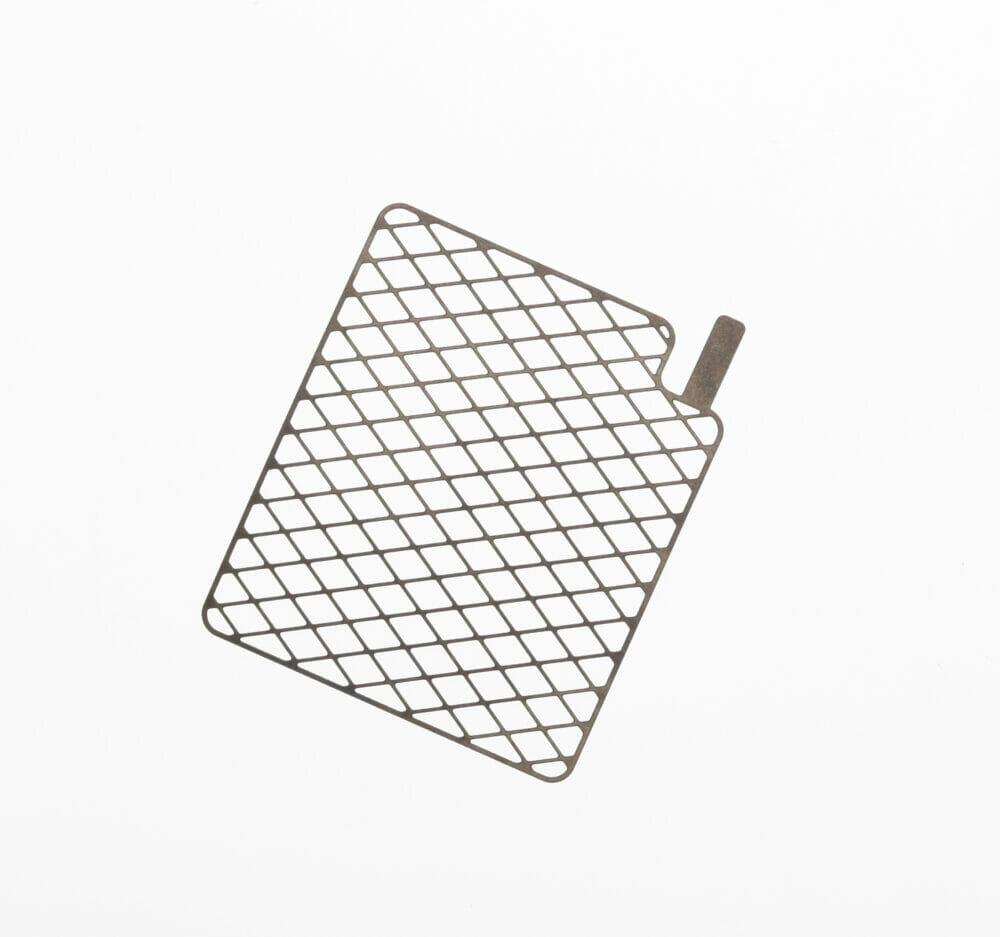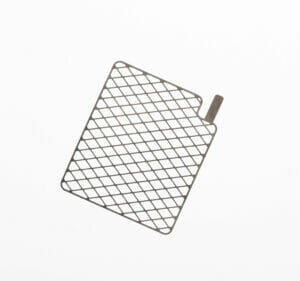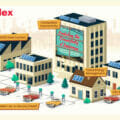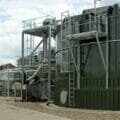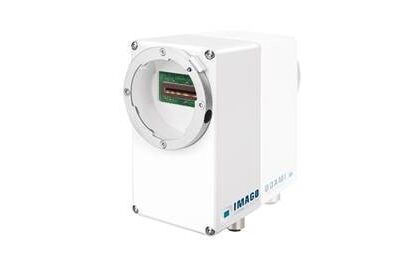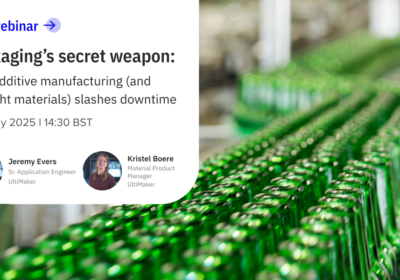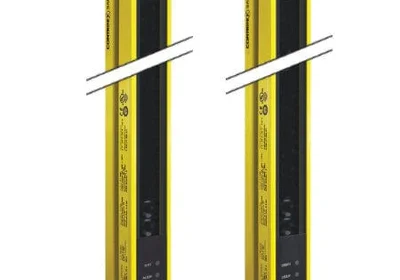Eric Kemperman is the Research & Quality Manager at Etchform BV, part of the micrometal Etching Group, which is pushing the boundaries of photo chemical etching (PCE), and which offers the most precise and repeatable PCE service available to manufacturers. In this article, Eric will answer questions that focus on the use of PCE to etch titanium, and how Etchform and the micrometal Etching Group are succeeding in making an already precise metal part fabrication process even more precise as demands from industry become more and more exacting in terms of repeatable tolerance attainment of exotic materials.
- Q:How can Etchform claim that it is the market leader in titanium etching. What is it in the context of your company that you can say differentiates your titanium etching from alternative suppliers? What is it Etchform does differently?
- A: Well, first of all, our process is one that we developed ourselves from the ground up in our own laboratories. This makes it different from other processes you will find elsewhere in the world, which often copy and try to evolve existing processes. Also, we started with this large scale development in the 1990’s which means we have over 30 years concentrated focus on titanium etching. It was in the 1990s that we built our own pilot skill etching machine, and based on the results of that, we developed our production scale machine for series production. No other supplier can boast that amount of concentration on the etching of titanium, and from this experience we have forged a market-leading reputation.
- Q: In terms of the actual etching process itself, what is it that differentiates what Etchform does from alternative suppliers when it comes to processing titanium?
- A: It’s mainly the etchant chemistry. I would say that 95 to 100% of PCE processes for titanium in the world are based on the use of hydrofluoric acid which is a very hazardous substance. We and a number of our customers didn’t want this chemical in our factory. This was the spur to us looking for other effective etchant chemistries.
- Q: So, hydrofluoric acid is obviously dangerous and the chemicals that Etchform uses are less so. Do your alternative etchant chemistries also have a positive impact on the etching process itself, the tolerances that can be achieved, etc?
- A: Not so much. We are at least as good as alternative suppliers, but the key is that we get there without the use of such hazardous etchant chemistries, so the major play and differentiator is the sustainable and environmental angle which is today extremely important for some customers. We have customers that use us as we can demonstrate our differences in this respect, many from the medical sector which today more than most sectors demand environmentally friendly production.
- Q: Which sectors do you see as having significant demand for etched titanium parts, and why?
- A: Well, first and foremost there is the medical industry, a major driver here beyond the lightweight and strong nature of material being the fact that it is biocompatible. This makes it an ideal material for implants and also pace maker parts. IN this latter application area, the titanium is used inside a closed box, so biocompatibility is less of an issue, but titanium also demonstrates a superior electronic capacity which drives its use in this instance.
- Q: Obviously, the strength to weight ratio of titanium is important in industries like aerospace. Do you cater for this sector as well?
- A:Yes, indeed, we do aerospace work, some is metals other than titanium, but where titanium is required, it is primarily because of the impressive strength to weight ratio of this metal. I would highlight two main aerospace applications that we cater for. One is the production of solar cell connectors which are very, very, thin foils. Here, weight is not that big an issue, so we use metals other than titanium, but because the foils are so thin, PCE is pretty much the only process that can achieve the tolerances required. Another is the production of parts and components for rocket combustion, and here the use of titanium is required due its inherent characteristics.
- Q: Quality is obviously key for all applications. What sort of processes do you have at Etchform in terms of metrology and quality control that ensures zero failure rates?
- A: Well, first of all, we have a large and highly experienced inspection department. Depending on the application, we do 100% inspection. For instance, the electronic parts for pacemakers require 100% visual and dimensional inspection. The controls are very strict. Of course, we make sure that our inspection equipment’s is certified and calibrated frequently. We are also interested in analysing yields. If we detect yield variation, we instruct an expert team to investigate the process to find the root cause. This is highly sophisticated work, and requires immense expertise, and an innate and complete understanding of the etching process which involves numerous process steps. We have that at Etchform, and success for us in in early detection and correction of issues which obviously affects the cost and critically the time to produce the parts required at the quality required for end-use applications.
- Q:How important is design for PCE in project success, and does this mean that you try to partner in the product development process with your customer?
- A: That’s a good question, and that’s one of the key strengths at Etchform. Every request for quotation (RFQ) that comes in, is carefully analysed, and if we see that there are some critical points design issues that need looking at, we immediately discuss these with customers, and look at the possibility of redesign to make the product better aligned with the PCE process. Only by doing this can outcomes be optimised.
- Q: What are the main things that you would highlight as being most important when designing for PCE?
- A: PCE offers several key beneficial characteristics that make it an attractive manufacturing method. Firstly, it enables high-precision and intricate designs, allowing for the production of complex parts with tight tolerances. Secondly, the process is cost-effective, as it eliminates the need for expensive tooling, reducing upfront costs. Thirdly, it is a highly efficient technique that allows for rapid production and quick turnaround times. Furthermore, the method is well-suited for a wide range of materials, including metals and alloys, providing versatility in material selection. Lastly, photochemical etching is a low-stress process that preserves the material’s integrity, resulting in burr-free and distortion-free components, making it ideal for applications where mechanical integrity is crucial.
- Ti-Grid_13-01
- Ti-Mesh_13-06
When designing a part to be made using PCE, designers should be mindful of several key factors. First and foremost, they must consider part complexity, tolerance requirements, and surface finishes all of which should be carefully addressed to optimize the overall manufacturability and functionality of the part through PCE. Precise and accurate design specifications are crucial to ensure the desired shape and dimensions are achieved during etching. Designers also need to account for the chemical compatibility of the chosen materials with the etching process to avoid potential issues. At Etchform we have the expertise to advise on all such factors.
- Q:I presume that tolerance attainment varies between the thicknesses of the material and the different types of titanium, but in general terms, what sort of tolerances are you able to repeatably attain with your PCE process?
- A: We advertise plus or minus 20% of the material thickness for titanium which is double the tolerances on less difficult to process metals but still better than alternative suppliers. In practice, we achieve significantly better tolerances than that. This is due to the fact we have decades of experience and we are using an in-house designed process which means we have a complete understanding unique to Etchform. By way of example, we have a maintenance guy that actually used to build etching lines, so it goes without saying that he really knows what he is doing. A combination of being an innovator that builds etching lines and a company that creates innovative chemistries is pretty unique in the space, and is a key contributor to our success.
- Q: To remain market leader, I imagine there is quite an active R&D Department at Etchform. Could you give me an idea of the R&D being undertaken?
- A: Especially when etching titanium, the most challenging part of the process is the combination of chemistry with resists. So there is a lot of R&D focused on this area. Most resists that are on the markets were designed for the PCB industry, and so are ideal for copper, but not stainless steel, and certainly not titanium. So this is the key challenge, developing resists that can withstand the chemistry required to process titanium.
Our R&D team accompanies customers from concept to series production. We discuss customer challenges, and we develop the best possible solution together. Our R&D team shows customers the best technical possibilities through the use of PCE, make our application and product knowledge available, and develop commercially optimised product designs.

